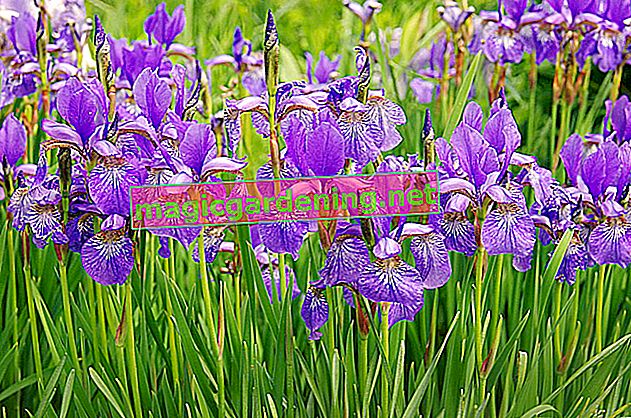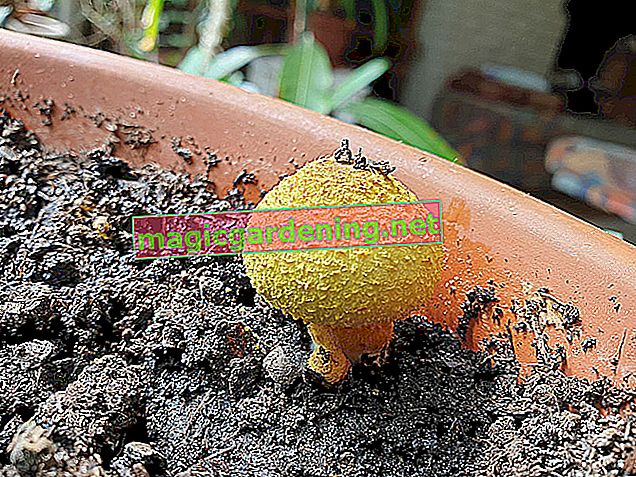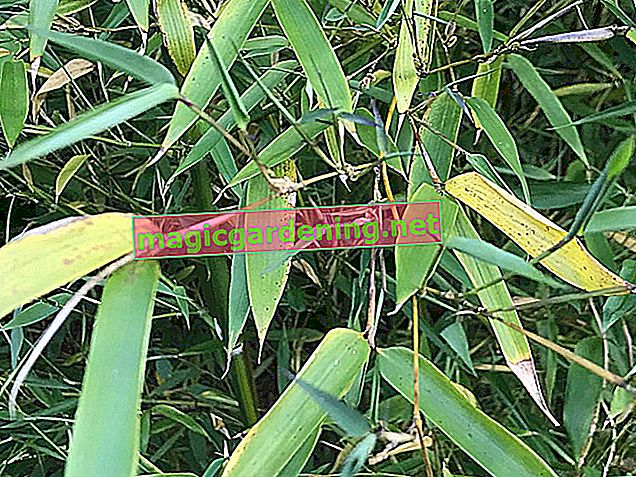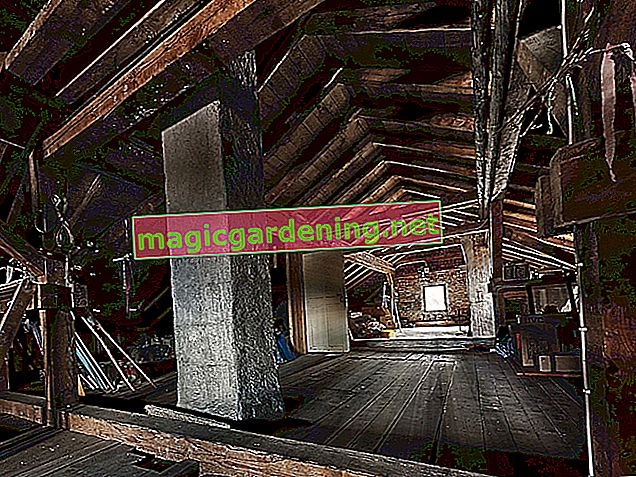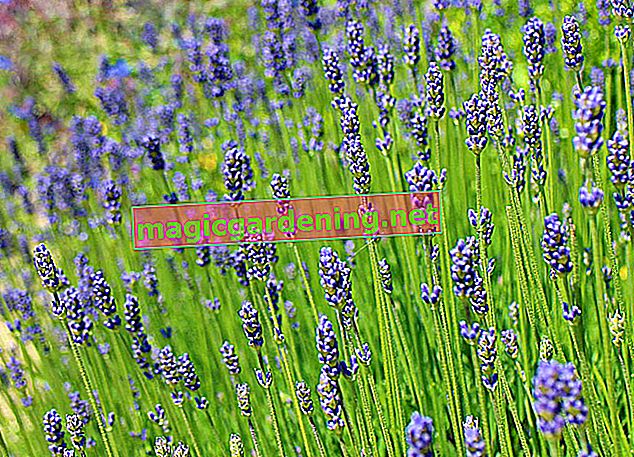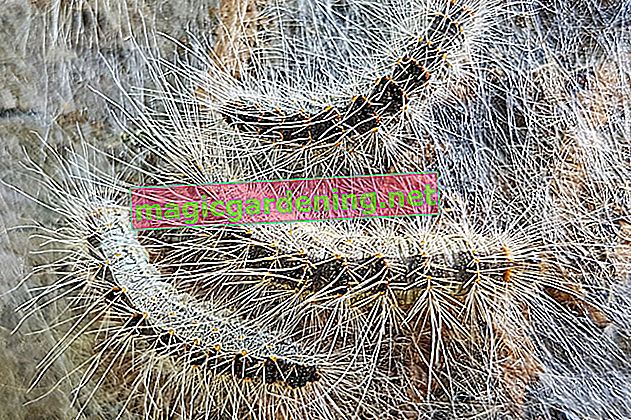
Interesting facts about the tuber vegetables
The origin of kohlrabi is obscure. The first cultivation areas were in Central Asia and the Mediterranean region. It was not until the 16th century that kohlrabi appeared in European herbal books. It has been grown in German-speaking countries in particular since the 19th century and is considered a typical German vegetable.
also read
- Long planting time for kohlrabi
- This is how kohlrabi can be sown
- The "cabbage family": types and varieties - tasty and healthy
Kohlrabi not only tastes good, the vegetables are low in calories and rich in healthy ingredients: Kohlrabi contains a lot of vitamin C and carotenoids in the leaves, which are converted into vitamin A by the body. Kohlrabi is also rich in magnesium, potassium, calcium and iron. Anthocyanins can be found in the blue varieties - these substances reduce the risk of heart and circulatory diseases.
Soil preparation: All-round wellness package for your kohlrabi in the garden bed
Although kohlrabi does not have particularly high demands on the soil, you should prepare the bed in autumn for the cultivation of the delicious tubers. Mix the soil with plenty of ripe compost and if you can get cow or horse manure, work it in. The bed must then rest for the winter before your kohlrabi plants take possession of it. The nutrient content of the soil produced in this way is ideal for the medium-heavy kohlrabi.
Kohlrabi look and weight
Kohlrabi is actually a biennial plant. In the first year it develops a thickened stem axis. Because this is harvested, it no longer gets to show what else is in it. In the second year it forms branched inflorescences if you let it. The plant has elongated, long-stemmed leaves that you can also use as leafy vegetables or raw in salads.
The kohlrabi absorbs its nutrients from the tap root. Depending on the variety, kohlrabi tubers can reach a diameter of 5 to 20 cm and weigh 100 g to an impressive 8 kg: enough vegetables for a large family, including hungry neighbors' stomachs. The tubers are elongated or round in shape. If you plant the kohlrabi plants too closely, however, your kohlrabi harvest may turn out to be cylindrical: a result of the lack of light.
Blue and white kohlrabi varieties
Around 54 varieties of kohlrabi are grown in Germany: 40 white kohlrabi varieties - only 14 varieties have a blue skin. If you have the ambition to harvest bombastically large kohlrabi, use seeds of the varieties (white) giant or (blue) super melt. Incidentally, the white varieties ripen faster than the blue ones.
Prefer kohlrabi, sowing and planting times
Kohlrabi is one of the quick starters among vegetables. There are only 12 to 20 weeks between sowing and harvesting - depending on the variety and location.
Prefer kohlrabi
Pots with a diameter of 4 - 5 cm are ideal for serving the kohlrabi. It needs a bright and warm location to germinate. Temperatures between 12 and 16 ° C are ideal. If the plants are a little larger (3 - 4 leaves) they can also be cooler. You can start growing on the windowsill, in the greenhouse or in the cold frame as early as the end of February. It is also important that you keep the plants evenly moist.
Sow in the field
From the end of April you can sow the vegetables directly outside. To do this, make grooves about 1 cm deep and add the seeds. Make sure there is sufficient distance. If the plants are bigger, you can thin them out like this. There should be a distance of at least 20 cm between the plants. If you sow kohlrabi later (this is possible until mid-July) the plants need more space. Then you should keep a distance of at least 30 cm.
Plant out the kohlrabi
April is the right time to plant the preferred small kohlrabi in the open air. If you do not feel like growing the plants yourself, or do not have enough space, you can of course also buy preferred kohlrabi plants from the gardener and then plant them outdoors. If there are still nights of frost, you should cover the culture with fleece. The plants can withstand the cold for a short time, but stretch their arms when it really freezes. To cover your need for the delicious vegetables over the summer, you can re-sow outdoors every 2 weeks. You can almost watch kohlrabi, it grows so fast.
The thing about the neighborhood
Kohlrabi is a type of cabbage and thus belongs to the cruciferous family. All types of cabbage are quite susceptible to pest infestation - for example the white cabbage fly, the cabbage white butterfly or fleas - or other cabbage diseases such as the cabbage hernia. If you grow too many plants from the same family in one location, the risk of pests nestling and / or the plants becoming sick increases.
You can hope for a lush kohlrabi harvest if you place your kohlrabi plants next to French beans, radishes or together with marigolds and marigolds in the bed. Kohlrabi also go well with cucumbers, potatoes, peas, leeks, radishes, celery, tomatoes and onions. Lettuce, radish, beetroot, salsify and runner beans also go well with kohlrabi.
Caring for and harvesting kohlrabi
For splendid kohlrabi tubers, it is important that there are no major fluctuations in the moisture balance. Your kohlrabis needs water every day, especially in summer. Otherwise there is a risk that the tubers will crack or become woody. If you are sowing outdoors after the early varieties, it is advisable to increase the nutrient content of the soil with horn meal or nettle manure. Little but continuous is digestible here for a good harvest.
Kohlrabi harvest and storage
You shouldn't let early kohlrabi varieties grow so big. When they are even smaller, they taste particularly spicy and are very tender. If you want to harvest your kohlrabi, you cut it off just below the tuber. Early varieties only have a shelf life of around 2 weeks. You can easily store the late varieties in a cool cellar for several weeks and use them as required.
Tips & Tricks
• In the event of pests or diseases, the plants belong in the garbage - never in the compost
• Do not plant the kohlrabi too shallowly or too deeply: Otherwise they will not be stable or the tuber will be in contact with the ground and could rot.
• If you have harvested kohlrabi, you should not grow cabbage there for the next 3 to 4 years. The soil needs to recover and there is an increased risk of pest infestation and disease.
• If there is a lack of nutrients or too little water, kohlrabi begins to bloom: no tuber is formed.
• You can make optimal use of the abundance of kohlrabi ingredients if you cook the kohlrabi whole and only then peel it.


